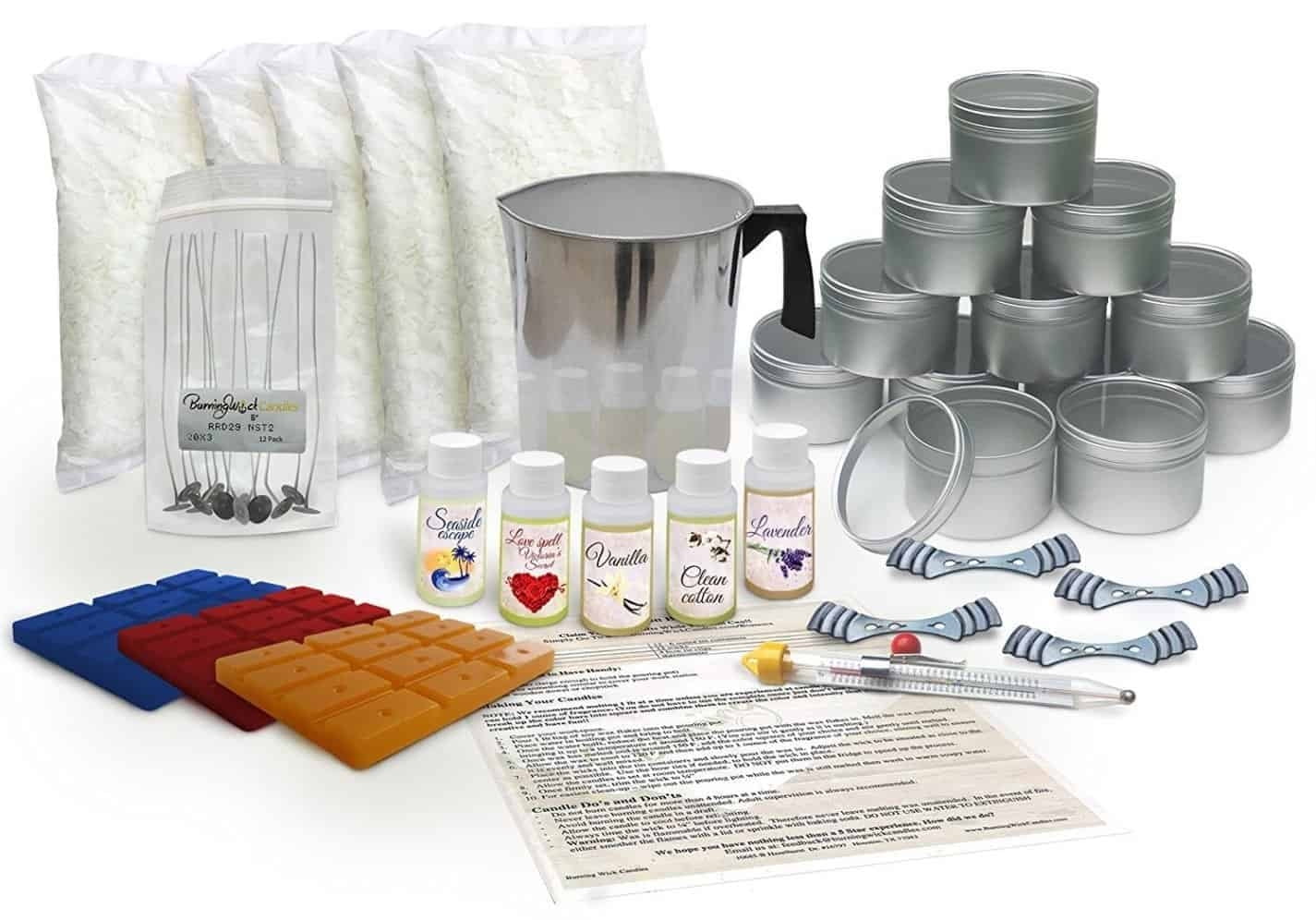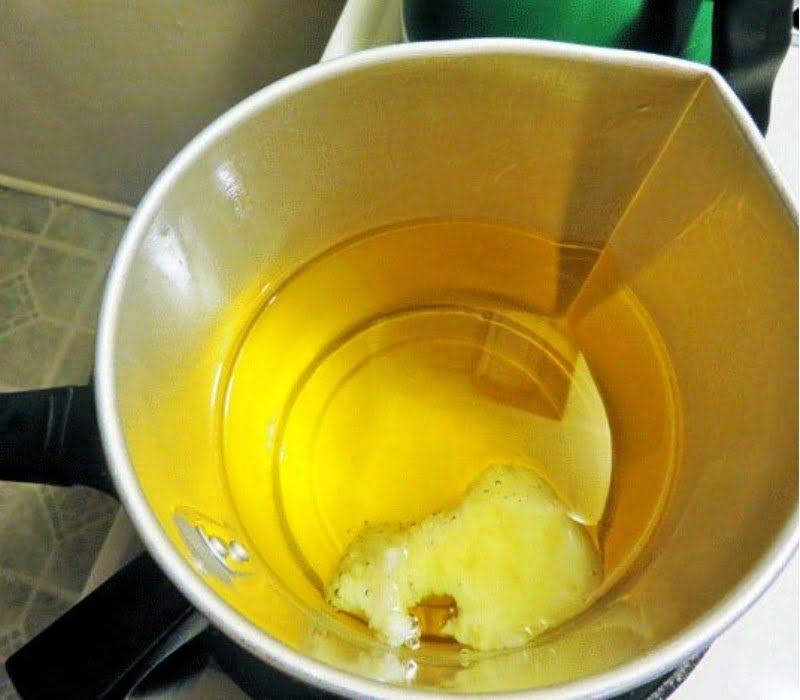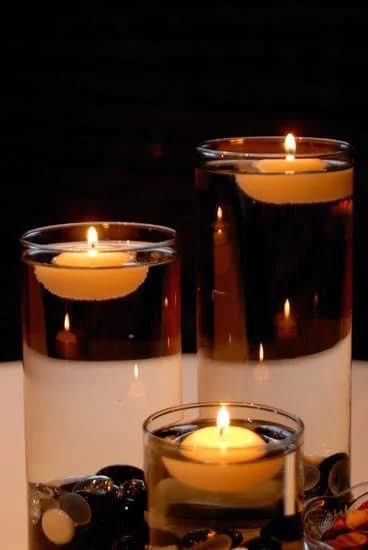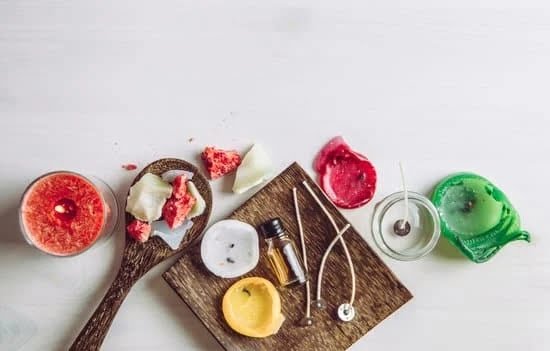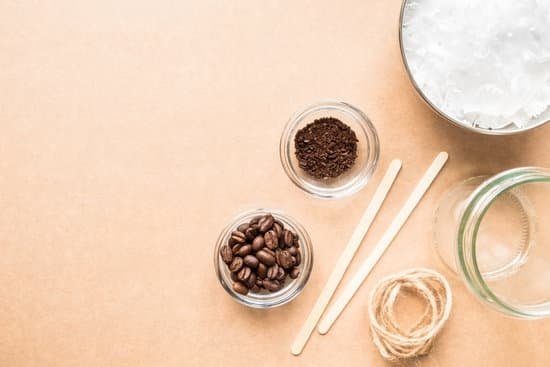Whether you’re a seasoned candle maker or just starting out, the idea of using essential oils in your creations may have crossed your mind. In this article, we will delve into the world of essential oils and explore their role in candle making. From understanding how essential oils and candles work together to maximizing scent throw and creating homemade creations, we will cover everything you need to know about incorporating essential oils into your candle making process.
When it comes to creating scented candles, there is no shortage of options available. Essential oils offer a natural and aromatic alternative to synthetic fragrance oils.
By infusing your candles with these concentrated plant extracts, you not only add fragrance but also introduce therapeutic benefits that can enhance aromatherapy and mood. Whether you’re looking for a calming lavender scent or an invigorating citrus blend, essential oils provide a wide range of possibilities for adding a personal touch to your candle-making endeavor.
However, before diving into the world of essential oils in candle making, it’s important to understand the basics of how they work together. Essential oils are highly volatile substances extracted from plants through various methods such as steam distillation or cold pressing.
When added to melted wax, these oils disperse throughout the candle during the cooling process, releasing their aroma when the candle is lit. The scent produced by essential oil-infused candles is generally milder than those created with synthetic fragrances but offers a more natural and subtle experience.
In the following sections of this article, we will explore the benefits of using essential oils in candle making and discuss factors to consider when choosing the right ones for your creations. We will also provide safety precautions and tips for proper usage of essential oils, along with techniques for incorporating them into your candles through mixing and blending.
Additionally, we will offer suggestions on combining different essential oils with specific wax types to maximize scent throw. Lastly, we will share DIY essential oil candle recipes, step-by-step instructions, and address common concerns and questions in an FAQ section.
Are you ready to ignite your creativity and explore the world of essential oils in candle making? Let’s embark on this journey together and discover the endless possibilities that await us.
Understanding the Basics
Essential oils and candles have been used for centuries in various ways, including for relaxation, aromatherapy, and creating a pleasant ambiance. Understanding how these two elements work together is essential when using essential oils in candle making.
How Candles Work
Candles are made of wax, which can be either soy, beeswax, or paraffin. The wax is combined with a wick made of cotton or other similar materials. When the wick is lit, the heat melts the wax surrounding it, causing it to vaporize. This vaporization process releases fragrance into the air.
How Essential Oils Enhance Candles
When essential oils are added to candles, they enhance the fragrance of the candle and add therapeutic benefits. Essential oils are concentrated plant extracts that carry the natural aroma and properties of the plant they are derived from. These oils can bring a wide range of scents to your candles, from lavender’s calming effects to citrus’s invigorating properties.
Proper Use of Essential Oils in Candle Making
To incorporate essential oils into your candle making process effectively, there are a few key points to consider. First, it’s important to use high-quality essential oils that are specifically labeled for candle making purposes. These oils are typically more concentrated so that their scent will withstand the heat of the candle flame.
Secondly, when adding essential oils to your candles, it’s crucial to follow proper measurement guidelines. Too much oil can cause an overly strong scent or even interfere with the burning process. On the other hand, too little oil may result in a weak aroma.
Lastly, when adding essential oils to your melted wax before pouring it into molds or containers, ensure that you mix them thoroughly and evenly distribute them throughout the wax.
By understanding how essential oils and candles work together and adopting proper usage techniques during candle making, you can create high-quality scented candles that provide a delightful aromatic experience.
Benefits of Using Essential Oils in Candle Making
Using essential oils in candle making can provide numerous benefits, particularly in enhancing aromatherapy and mood. Incorporating these natural extracts into your candles not only adds a delightful scent but also allows you to create a relaxing and soothing atmosphere in your space.
Aromatherapy Benefits
One of the main advantages of using essential oils in candle making is the ability to harness the power of aromatherapy. Aromatherapy is a holistic healing practice that utilizes the therapeutic properties of essential oils to promote physical and emotional well-being. When these oils are combined with candles, they can create a powerful sensory experience that can positively impact your mood and overall state of mind.
Stress Relief and Relaxation
Certain essential oils, such as lavender, chamomile, and ylang-ylang, are known for their calming properties. These scents can help reduce stress levels, promote relaxation, and improve sleep quality. By incorporating these oils into your candles, you can create a peaceful ambiance that helps you unwind after a long day or prepare for a restful night’s sleep.
Mood Enhancement
Essential oils have the ability to influence our emotions and uplift our mood. Scents like citrus fruits (such as lemon or orange), peppermint, or rosemary can be invigorating and energizing. On the other hand, floral scents like geranium or jasmine can be soothing and uplifting. By selecting the right essential oils for your candles based on their mood-enhancing properties, you can create an environment that matches your desired emotional state.
Overall, adding essential oils to your homemade candles not only enhances their fragrance but also provides you with additional therapeutic benefits through aromatherapy.
Cautions and Considerations
While incorporating essential oils into candle making offers many benefits, it’s essential to exercise caution when using them. Some essential oils may have different effects on individuals and can even cause adverse reactions, such as headaches or skin irritations.
Therefore, it’s crucial to conduct thorough research on the specific essential oils you plan to use, ensuring they are safe for candle making and compatible with your personal sensitivities. Additionally, always start with a lower amount of essential oil in your candle recipe and gradually increase the concentration based on your preference and sensitivity.
Furthermore, it’s important to note that not all essential oils are suitable for candle making due to differences in volatility and flammability. Some essential oils with low flashpoints may be unsafe or result in poorer scent throw when used in candles. It’s recommended to choose essential oils specifically formulated for candle making or consult resources that provide guidance on safe usage.
By understanding the benefits of using essential oils in candle making and taking necessary precautions, you can create delightful candles that not only look beautiful but also enhance aromatherapy and mood in your living space.
Choosing the Right Essential Oils for Candle Making
When it comes to incorporating essential oils into your candle making, choosing the right oils is essential for achieving the desired scent and therapeutic effects. Here are some factors to consider when selecting essential oils for candle making:
- Scent Profile: Different essential oils have varying scent profiles, ranging from floral and citrusy to herbal and woody. It’s important to choose scents that complement each other and align with the mood or ambiance you want to create with your candles. Consider experimenting with different combinations of scents to find the perfect blend.
- Safety Precautions: Some essential oils can be irritating or toxic when used in high concentrations or by certain individuals. Before using any essential oil in your candles, research their safety guidelines and usage recommendations. It’s also a good idea to perform a small patch test before using a new oil to ensure it doesn’t cause any adverse reactions.
- Quality and Purity: It’s crucial to use high-quality and pure essential oils in candle making to ensure optimal scent throw and longevity. Look for reputable brands that provide third-party testing or certifications to guarantee the purity of their oils. Lower quality or diluted oils may not produce the desired fragrance strength or could emit unpleasant odors when burned.
To make the selection process easier, here are some popular essential oils commonly used in candle making:
- Lavender: Known for its calming properties, lavender essential oil is often used in candles meant for relaxation and stress relief.
- Eucalyptus: With its refreshing and invigorating aroma, eucalyptus essential oil is a great choice for candles intended for boosting focus and mental clarity.
- Citrus (such as lemon, orange, grapefruit): Citrus essential oils have uplifting and energizing qualities, making them ideal for creating vibrant and cheerful atmospheres.
- Patchouli: This earthy and musky essential oil is often used in candles designed to promote grounding, balance, and relaxation.
- Peppermint: Offering a cool and minty scent, peppermint essential oil can be used in candles that aim to stimulate the senses and provide clarity.
Remember to start with small amounts of essential oils when first experimenting with combinations. Keep track of the ratios and blends you use so you can recreate your favorite scents in the future.
Safety Precautions and Tips
When using essential oils in candle making, it is important to prioritize safety to ensure a positive and enjoyable experience. Here are some essential safety precautions and tips to keep in mind:
- Dilute Essential Oils: Essential oils are highly concentrated and should never be used undiluted in candles. It is recommended to dilute the oils with a suitable carrier oil or another compatible medium before adding them to the candle wax. This helps to prevent any adverse reactions or potential skin irritations.
- Choose High-Quality Essential Oils: It is crucial to select high-quality essential oils for candle making purposes. Opt for oils that are 100% pure and derived from natural sources, as synthetic fragrances may not provide the same benefits or scent quality. Be sure to purchase essential oils from reputable suppliers that adhere to strict quality standards.
- Test for Allergies and Sensitivities: Before incorporating essential oils into your candles, it is advisable to conduct a patch test on a small area of skin to check for any allergic reactions or sensitivities. Everyone’s tolerance levels differ, so what may be safe for one person may cause discomfort for another.
- Follow Recommended Usage Rates: Different essential oils have varying usage rates when it comes to candle making. It is important to consult reliable sources or fragrance calculators that can guide you on the appropriate amount of essential oil needed for your specific candle size and wax type. Overusing essential oils can affect the performance of the candle and potentially pose a safety risk during burning.
- Consider Flammability: Some essential oils have lower flash points than others, meaning they are more likely to ignite at lower temperatures. When selecting essential oils for your candles, take note of their flash point and choose those with higher flash points if possible, as this reduces the risk of accidental combustion during use.
- Label Your Candles: It is essential to label your candles with the specific essential oils used in their creation. This ensures that users are aware of the ingredients present and can avoid any potential allergies or sensitivities. Clear labeling also helps in identifying the different scents of your candles, making it easier for customers or yourself to select their preferred aromas.
By following these safety precautions and tips, you can confidently incorporate essential oils into your candle making process. Remember to prioritize safety, use high-quality oils, and educate yourself on proper usage rates and potential hazards. With the right precautions in place, you can fully enjoy the benefits of essential oils while creating beautiful and fragrant candles.
Techniques for Incorporating Essential Oils in Candle Making
One of the key aspects of using essential oils in candle making is understanding how to incorporate them effectively. This section will explore various techniques for mixing and blending essential oils in candle making to create beautifully scented candles.
When it comes to incorporating essential oils, one common technique is to mix them directly into the melted wax before pouring it into the candle mold. This ensures that the fragrance is evenly distributed throughout the entire candle. To do this, simply add a few drops of your chosen essential oil(s) into the melted wax and stir gently until well combined.
Another technique for incorporating essential oils is through layering or scent blending. This involves pouring multiple layers of scented wax with different essential oil fragrances to create a unique and complex aroma profile. For example, you can pour a layer of lavender-scented wax followed by a layer of vanilla-scented wax to create a calming and soothing blend.
Additionally, you can also experiment with creating custom blends of essential oils before adding them to the melted wax. Start by selecting complementary scents that work well together, such as citrus and floral or woody and spicy aromas. Use a dropper or pipette to measure out the desired amount of each oil and mix them together in a separate container. Once blended, add the custom blend to the melted wax and stir thoroughly.
Techniques for Incorporating Essential Oils in Candle Making: Mixing and Blending
| Technique | Description |
|---|---|
| Mixing directly into melted wax | Add a few drops of essential oil(s) into melted wax and stir gently. |
| Layering or scent blending | Pour multiple layers of scented wax with different essential oil fragrances. |
| Creating custom blends | Combine complementary essential oils together before adding to the melted wax. |
By utilizing these techniques, candle makers can fully harness the aromatic power of essential oils to create exquisite and personalized candles with captivating scents. The possibilities for mixing and blending are endless, allowing for endless creativity in creating unique olfactory experiences. Remember to experiment with different combinations and ratios to find the perfect blend that suits your preferences and desired mood.
Tips for Combining Essential Oils with Different Wax Types
One of the key factors in creating a successful scented candle is maximizing the scent throw, or the strength and reach of the fragrance when the candle is lit. When it comes to combining essential oils with different wax types, there are several tips and techniques that can help you achieve a strong and long-lasting scent in your candles.
- Know Your Wax: Different types of wax have different characteristics that can affect scent throw. For example, soy wax has excellent fragrance-holding properties and a good hot throw, while paraffin wax offers a stronger cold throw but may require more essential oil to achieve a powerful hot throw. Be sure to research and understand the properties of the wax you are using before deciding on the amount and type of essential oil to use.
- Consider Oil Concentration: The concentration of essential oil in your candle can greatly impact its scent throw. Generally, it is recommended to use about 6-10% fragrance oil for soy candles, while for paraffin candles a higher concentration ranging from 10-12% may be needed. However, it’s important not to exceed the recommended usage rate as this can lead to poor burn quality and safety issues.
- Experiment with Blending: Combining different essential oils can create unique and complex scents that enhance aromatherapy benefits and mood-setting abilities. To create your own signature blend, start by selecting oils with complementary notes such as floral, citrus, or woody scents. Try blending two or more oils together in small test batches to see how they interact before making larger quantities of candles.
To maximize scent throw even further, you can also incorporate certain techniques during the candle making process:
- Preheating: Preheating your containers before pouring melted wax helps reduce air bubbles that may trap fragrance molecules and inhibit their release.
- Stirring: Regularly stirring melted wax while adding essential oils ensures an even distribution of fragrance throughout the mixture.
- Curing Time: Allowing your candles to cure for a minimum of one week before burning can help enhance the scent throw. This gives the oils time to fully bind with the wax and develop a stronger fragrance.
By following these tips and techniques, you can create beautiful scented candles that fill your space with delightful aromas and promote relaxation and well-being. Experiment with different combinations and concentrations to find the perfect balance that suits your preferences and desired scent throw.
DIY Essential Oil Candle Recipes
Creating your own essential oil candles is a fantastic way to personalize your space with your favorite scents. Not only do these homemade creations provide a unique and delightful aroma, but they can also contribute to a soothing and comforting atmosphere. In this section, we will explore step-by-step instructions for making DIY essential oil candles.
- Choose Your Wax: The first step in making essential oil candles is selecting the right wax. There are various options available, including soy wax, beeswax, and paraffin wax. Each type of wax has its own advantages and considerations, so it’s important to choose one that suits your preferences and needs.
- Prepare Your Materials: Gather all the necessary materials before you begin. These include the wax, wicks, essential oils of your choice, a double boiler or melting pot, a thermometer to monitor the temperature, a stirring utensil, and containers or molds for your candles.
- Melt the Wax: Use the double boiler or melting pot to melt the wax on low heat. It’s crucial to keep an eye on the temperature as overheating can affect the quality and fragrance of the essential oils later on.
- Add Essential Oils: Once the wax has completely melted and reached the desired temperature (typically around 180°F), it’s time to add your chosen essential oils. The recommended amount is approximately 1 ounce of essential oil per pound of wax. However, you can adjust this ratio based on how strong you want the scent to be.
- Mix Thoroughly: Stir the mixture gently but thoroughly to ensure that the essential oils are evenly distributed throughout the wax. This step is crucial for achieving consistent fragrance in each candle.
- Pour into Containers or Molds: Carefully pour the melted wax into your chosen containers or molds while ensuring that the wick stays centered. Allow the candles to cool and solidify completely before trimming the wicks to a suitable length.
Remember, experimenting with different essential oil combinations can result in unique and wonderful scents, so feel free to get creative. By following these step-by-step instructions, you can enjoy the satisfaction of making your own essential oil candles at home.
FAQs
As the popularity of essential oils continues to grow, many candle makers are curious about incorporating these aromatic extracts into their creations. Here are some frequently asked questions and answers to help address common concerns and questions about using essential oils in candle making.
- Can I use any essential oil in candle making?
- How much essential oil should I add to my candles?
- Can I mix different essential oils together?
While there is a wide variety of essential oils available, not all of them are suitable for candle making. Some essential oils have low flashpoints, which means they can ignite at lower temperatures. It is important to choose essential oils with high flashpoints, typically above 122°F (50°C), to ensure safety during the candle-making process.
The amount of essential oil you add to your candles depends on personal preference and the desired scent strength. As a general guideline, a safe starting point is around 6-10% fragrance load per pound of wax. However, it’s crucial to follow specific guidelines provided by the fragrance manufacturer for accurate measurements.
Yes, you can mix different essential oils together to create unique and customized scents for your candles. Experimenting with different combinations can lead to delightful aromas that suit your preferences and mood. However, it’s important to note that some essential oils may not blend well with others or may have overpowering scents when combined, so it’s recommended to start with small test batches before proceeding with larger quantities.
| Essential Oil | Flashpoint (°F) |
|---|---|
| Lavender | 156 |
| Peppermint | 160 |
| Lemon | 115 |
| Vanilla | 200 |
Remember to always conduct research and refer to reputable sources when choosing essential oils for your candle making projects, and enjoy the creative process of exploring different scents and combinations.
Conclusion
In conclusion, incorporating essential oils in candle making can be a wonderful way to ignite your creative journey. The combination of aromatherapy and mood enhancement that essential oils provide can elevate your candle-making experience to another level. By carefully selecting the right essential oils and following safety precautions, you can create unique and personalized scents that not only fill your space with captivating fragrance but also promote relaxation and well-being.
One of the great benefits of using essential oils in candle making is the ability to customize scents according to your preferences. Whether you want a calming lavender-infused candle for stress relief or an invigorating citrus-scented one for a refreshing ambiance, the options are endless. The techniques provided in this article, such as mixing and blending, empower you to experiment with different combinations and create your own signature scent.
Additionally, by maximizing scent throw through proper selection of wax types and combining them with suitable essential oils, you can ensure that the beautiful aromas from your candles spread throughout your home or workspace. This not only creates a pleasant environment but also enhances the therapeutic properties of essential oils, allowing you to fully enjoy their benefits.
Frequently Asked Questions
What essential oils are safe for candle making?
When it comes to candle making, there are several essential oils that are considered safe to use. Lavender oil is a popular choice not only for its pleasant scent but also for its calming properties. Citrus oils like lemon or orange can add a refreshing and uplifting aroma to your candles.
The warm and cozy scent of cinnamon oil is another option that many people enjoy. It’s important to note that different essential oils have different flashpoints, which is the temperature at which they can potentially ignite. Therefore, it is crucial to research each essential oil’s specific flashpoint and use caution when adding them to your candle-making process.
Is it better to use fragrance oil or essential oil for candle making?
The decision between using fragrance oil or essential oil for candle making depends on personal preference and the desired outcome. Fragrance oils are synthetic blends specifically created for scenting products like candles. They often offer a wider variety of scents that may not be possible to achieve with essential oils alone.
Fragrance oils tend to have a stronger scent throw and are typically less expensive than essential oils as well. On the other hand, essential oils are derived from natural plant sources and can provide a more authentic aroma in candles. They may offer additional therapeutic benefits due to their natural properties but tend to be more expensive and have a weaker scent throw compared to fragrance oils.
Can you use essential oils in candles instead of fragrance oils?
Yes, it is possible to use essential oils in candles instead of fragrance oils. However, there are some factors you should consider before substituting one for the other. Essential oils have lower flashpoints than fragrance oils, so care must be taken during the candle-making process to ensure safety and avoid potential fire hazards.
Additionally, since essential oils tend to have a weaker scent throw compared to fragrance oils, you may need to use higher concentrations of essential oil in your candle recipe to achieve the desired level of fragrance intensity. This evaluation should be done on an individual basis depending on the specific results you want and following recommended guidelines for candle-making.

Welcome to my candle making blog! In this blog, I will be sharing my tips and tricks for making candles. I will also be sharing some of my favorite recipes.

